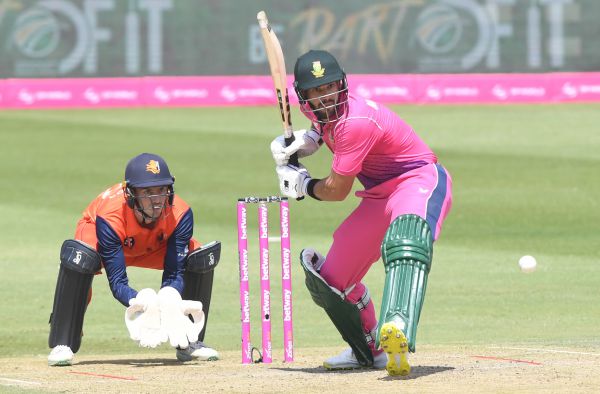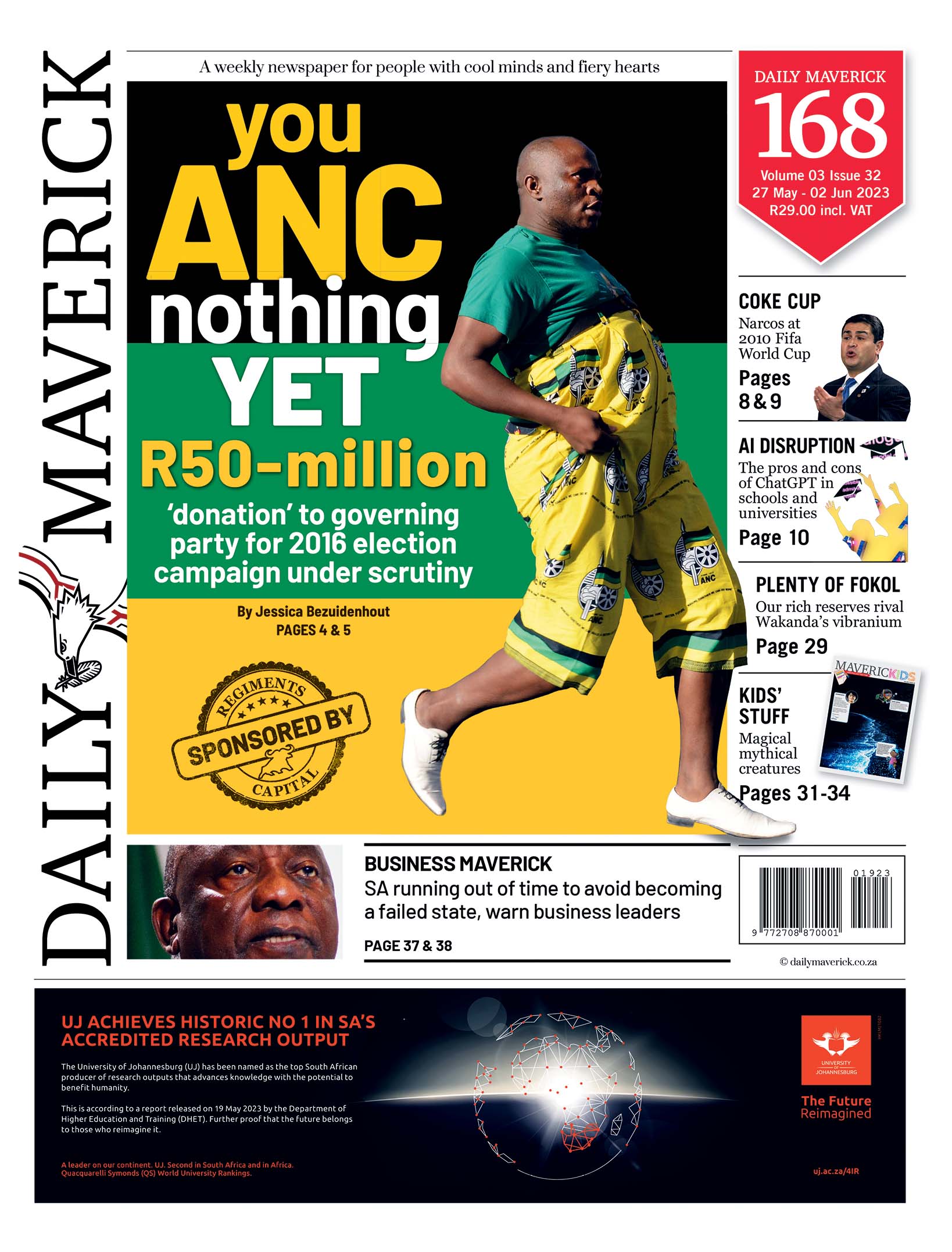MONEY SPINNERS
ICC funding plan bowls SA’s cricketers a googly

CSA will reportedly only receive a 4.37% slice of world cricket’s money pie over the next four-year television broadcast cycle.
Cricket South Africa (CSA) has declined to offer more perspective on the proposed International Cricket Council (ICC) funding model for the next four-year cycle – from 2024 to 2027.
Two weeks ago, ESPNcricinfo unveiled a proposed funding model in which India take a 38.5% chunk of the ICC’s annual earnings of $600-million, whereas South Africa is on the other end of the spectrum with a 4.37% sliver – $26.24-million (R505-million) a year.
“CSA has noted recent media reports regarding the proposed funding model of the ICC. It is regrettable that discussions of the ICC funding model are prematurely being made public,” CSA said in a statement sent to Daily Maverick.
“The various funding models will be discussed at length at the upcoming ICC Annual General Meeting (AGM).
“This will give an indication to the ideal distribution framework and other proposed funding models to ensure all members are in agreement,” it said.
“CSA cannot comment on the ICC’s funding model until conclusive resolutions are made at the annual AGM.”
The proposed funding is yet to be ratified, but it is supposed to be approved by June, before being formally adopted at the ICC’s AGM in Durban in July.
Slight changes are anticipated before the AGM, but nothing major is expected.
CSA is fighting an uphill battle with the big players: Board of Control for Cricket in India (BCCI), England and Wales Cricket Board (ECB) and Cricket Australia (CA).
In the current funding model cycle (2015-2023), seven of the nine full-member nation cricket teams get the same amount — with the ECB getting slightly more than the seven and the BCCI more than double.
According to ESPNcricinfo, a grading system was used for the proposed finance model for 2023-2027.
The grading criteria include: cricket history, performance in both men’s and women’s ICC events over the past 16 years, contribution to the ICC’s commercial revenue and an equal weighting for the status of being a full member of the ICC.
Nations’ contributions
Although all members have more or less an equal footing on most of the criteria, India contributes far more than other nations to the commercial revenue of the ICC.
The ICC got about $2.1-billion in the previous broadcasting rights cycle (2015-2023).
But, for this cycle, it decided to sell the batch of media rights in different territories globally to maximise the commercial value of its events, such as the various World Cups and the World Test Championship, between 2024 and 2031.
The ICC sold its broadcasting rights for international tournaments in those territories for $3.2-billion in total, of which $3-billion was paid by Disney Star in India.
Ironically, CSA will earn more per year in this cycle, but their percentage of the pie has decreased – a worrying trend.
The proposed model has a big impact on the competitive balance in cricket and would seem to underline that growth of the global game is not a main objective of the ICC.
Only a few countries play cricket at its highest level. There will only be 10 countries playing in India’s prestigious 50-over World Cup in October later this year.
At the soccer World Cup in Qatar last year, by way of comparison, 32 countries participated.
With a gap growing between cricket’s top-earning countries and the bottom earners, the gulf in competition on the field is likely to widen, too.
Of the $600-million ICC pie, full members will receive $532.84-million and $67.16-million is dedicated to associate members.
The fewer countries that can invest in the development of players and their domestic structures, the less competitive the world of cricket will continue to be.
This means that the growth of the game at an elite level will slow down.
CSA is extremely reliant on the dividend from the ICC in the four-year cycles as it doesn’t earn much from cricket events in the country, even from bilateral series with other full members.
Countries only receive money from a bilateral series if it is played at home, because they own the broadcast rights and can sell them. However, few international broadcasters are prepared to pay big money for series involving the likes of Sri Lanka, Bangladesh and even New Zealand.
These countries might be successful on the field, but there are often not enough people interested in watching the matches – for many different reasons.
New Zealand, for example, has a small cricket-loving population and its 11-hour time difference with South Africa is less than ideal.
Therefore, incoming bilateral tours generally don’t generate much revenue for South Africa. And, in fact, they are often an expense for CSA.
The only tours from which CSA makes money are against India and England. Incoming tours by Australia either break even or see a small profit.
Revenue from tours to India is massive in comparison with anywhere else in the world. With other series, CSA loses money because tour costs outstrip revenue.
On top of the 38.5% slice of the ICC pie India is set to receive in the next cycle, it also makes a lot of money from bilateral series because of the huge interest in cricket in the country. Large profits are also made by the popular Indian Premier League.
It is a classic case of the rich becoming richer.
SA20 vital to sustainability
The future success of the SA20 tournament is vitally important for South African cricket to sustain itself as it finds itself increasingly marginalised in terms of ICC income over the next four years.
The SA20 already has a lucrative international broadcast deal in place with Indian broadcaster Viacom18, worth $30-million a year (R578-million) for the next 10 years. That includes rights to other cricket as well, including the Proteas.
Throw in an R80-million-a-year headline SA20 sponsorship from Betway for the next three years and a R70-million prize fund from the same company, and it’s obvious this tournament is reviving and bolstering South Africa’s domestic cricket scene.
Several more commercial deals are set to be concluded before the second edition.
The SA20 league is locked down for the next decade, as each of the six founding teams committed themselves to a 10-year deal.
The January/February time-slot is attractive, the tournament is short, the quality of the cricket is high and the pedigree of the wide array of international players on view is impressive.
The 2023 edition of the tournament exceeded all financial and viewership expectations and the league already has close to $400-million (R7.7-billion) committed income from commercial partnerships and contracts over the next decade.
CSA, as a 57% shareholder in the SA20, only receives a dividend, which amounted to R25-million after the inaugural tournament. This is not a hefty amount, but what the SA20 tournament does is provide huge wages for 40 or more South African cricketers. That eases the financial strain on unions and CSA in terms of contracts. DM
This story first appeared in our weekly Daily Maverick 168 newspaper, which is available countrywide for R29.




















 Become an Insider
Become an Insider
Break away, let the 3 holier than thought s play each other, the rest of the world start their own league